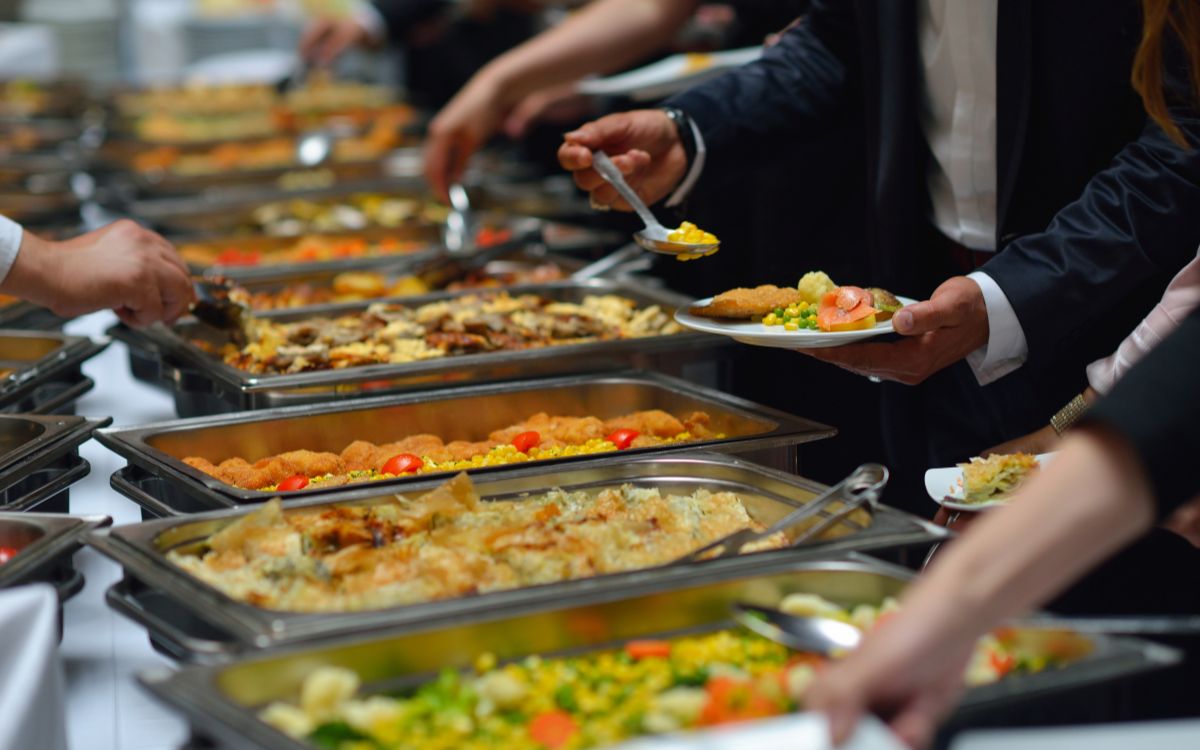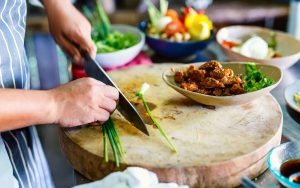In a world where food waste is a growing concern, it’s essential to explore ways to minimize our impact on the environment and maximize the use of ingredients in our kitchens. Zero-waste cooking is a sustainable approach that not only helps reduce food waste but also saves money and allows us to get creative with our meals.

In this comprehensive guide, we’ll delve into the world of zero-waste cooking and provide you with practical strategies and tips to make the most of your ingredients while minimizing waste. From planning your meals and shopping wisely to repurposing leftovers and utilizing often-discarded parts of fruits, vegetables, and meats, we’ll cover it all. Get ready to embark on a journey that will transform the way you think about cooking and waste!
Plan Ahead and Make a Shopping List
Planning ahead and creating a well-thought-out shopping list is a crucial first step in practicing zero-waste cooking. By taking the time to assess what you already have in your kitchen and planning meals for the week, you can minimize unnecessary purchases and reduce the chances of ingredients going to waste.
Assessing What You Have in The Kitchen
Before heading to the grocery store, take a thorough inventory of your pantry, refrigerator, and freezer. Look for ingredients that are approaching their expiration dates or items that need to be used up soon. By knowing what you already have, you can avoid buying duplicates and ensure that you prioritize using those ingredients first.
Planning Meals for The Week
Once you have a good understanding of what ingredients you already possess, it’s time to plan your meals for the upcoming week. Consider incorporating those ingredients into your meal plan to make the most of what you have on hand. Look for recipes that use similar ingredients or can be easily modified to accommodate what you already have.
Creating a Shopping List Based on Planned Meals
With your meal plan in hand, create a comprehensive shopping list that includes the additional ingredients you’ll need to complete your meals for the week. Be specific and detailed to avoid impulse purchases or buying more than necessary. Keep in mind that sticking to your list will not only save you money but also help reduce food waste.
Shopping Smartly to Avoid Overbuying
When you head to the grocery store, be mindful of your list and avoid succumbing to impulse purchases. Stick to the items on your list and resist the temptation to buy in excess. Additionally, consider buying in bulk when possible, as it often reduces packaging waste and can be more cost-effective in the long run.
Use the Whole Ingredient
One of the key principles of zero-waste cooking is utilizing the whole ingredient to its fullest potential. Instead of discarding scraps or parts that are commonly overlooked, we can get creative and transform them into delicious and nutritious dishes. By exploring different ways to use every part of an ingredient, we can minimize waste and extract maximum flavor.
Utilizing Vegetable Scraps
Vegetable scraps often end up in the compost bin without a second thought. However, these seemingly insignificant parts can be incredibly versatile and flavorful. For example, you can save vegetable scraps such as onion peels, carrot tops, and celery leaves to make a homemade vegetable stock.
These scraps add depth and richness to soups, stews, and sauces. Additionally, carrot tops can be turned into a vibrant pesto, while beet greens can be used in salads or sautés. Get creative and experiment with different ways to incorporate vegetable scraps into your cooking.
Repurposing Meat and Fish Bones
When cooking meat or fish, don’t discard the bones right away. They hold incredible flavor and can be repurposed into stocks and broths. Simmering meat or fish bones with aromatic vegetables and herbs creates a rich base that can be used in various recipes.
This homemade stock not only enhances the taste of soups and sauces but also reduces the need for store-bought alternatives, reducing packaging waste. Take advantage of the bones to extract every ounce of flavor and make the most of your ingredients.
Transforming Fruit Peels and Rinds
Fruit peels and rinds often end up in the trash, but they have hidden potential. Citrus peels, for instance, can be candied and used as a sweet garnish or infused into syrups, teas, or cocktails for a burst of flavor.
Watermelon rinds, which are typically discarded, can be pickled to create a tangy and refreshing accompaniment to meals or used in stir-fries for a unique twist. Don’t overlook the possibilities that fruit peels and rinds offer, and experiment with different ways to incorporate them into your zero-waste cooking repertoire.
Creative Cooking Techniques
In the realm of zero-waste cooking, creativity is key. By exploring innovative cooking techniques, we can breathe new life into ingredients that might otherwise go to waste. These techniques not only help maximize flavor but also extend the shelf life of ingredients, allowing us to make the most of what we have. Let’s dive into some exciting and inventive approaches to zero-waste cooking.
Fermentation
Fermentation is a time-honored technique that not only preserves food but also enhances its flavor and nutritional value. By harnessing the power of beneficial bacteria, you can transform surplus vegetables into tangy, probiotic-rich delights.
Fermented vegetables, such as sauerkraut and kimchi, add complexity and a pleasant tang to meals. Additionally, you can make homemade yogurt from leftover milk, expanding its usability and reducing waste. Explore the world of fermentation and unlock a whole new dimension of flavor in your zero-waste cooking endeavors.
Pickling and Preserving
Pickling and preserving are excellent methods to extend the shelf life of fruits and vegetables while infusing them with unique flavors. Pickling surplus vegetables, such as cucumbers, radishes, and carrots, not only preserves their freshness but also creates tangy, crunchy condiments that can elevate your meals.
Overripe fruits can be transformed into delicious jams and preserves, perfect for spreading on toast or incorporating into baked goods. By mastering pickling and preserving techniques, you can savor the taste of seasonal produce all year round, while reducing food waste.
Repurposing Leftovers
Leftovers often go overlooked or end up forgotten in the back of the refrigerator. However, with a bit of creativity, yesterday’s meal can be transformed into something entirely new and exciting. Reinvent leftover proteins, such as roasted chicken or grilled steak, by incorporating them into salads, stir-fries, or sandwiches.
Stale bread can be transformed into crispy croutons or breadcrumbs, breathing new life into soups and salads. Don’t let your leftovers go to waste—let them inspire you to create delicious, zero-waste meals that are both satisfying and resourceful.
Proper Storage and Organization
Proper storage and organization are essential aspects of zero-waste cooking. By implementing effective storage techniques and maintaining an organized kitchen, you can prolong the freshness of ingredients, reduce the chances of food spoilage, and minimize waste.
Let’s explore some key strategies for maximizing the shelf life of your ingredients and creating an efficient, waste-conscious kitchen.
Refrigerator and Freezer Tips
The refrigerator and freezer play crucial roles in food storage. To optimize their use for zero-waste cooking, it’s important to organize them properly. Arrange your refrigerator in a way that allows easy visibility of ingredients, reducing the chances of items being forgotten and wasted.
Keep similar items together and label containers to avoid confusion. Additionally, be mindful of temperature settings to ensure that perishable foods stay fresh for longer. Similarly, utilize your freezer effectively by storing ingredients in airtight containers or freezer-safe bags to prevent freezer burn and maintain quality.
Pantry Essentials
Maintaining a well-stocked pantry is key to zero-waste cooking. Stock up on versatile pantry staples such as grains, legumes, oils, and spices. However, it’s crucial to organize your pantry to prevent ingredients from going bad or becoming lost in the depths of the shelves.
Arrange items in a logical manner, with the oldest ones at the front for easy visibility and usage. Regularly check expiration dates and rotate items to ensure they are used before they expire. By keeping your pantry organized and well-maintained, you can reduce waste and maximize the usability of ingredients.
Creative Uses for Pantry Staples Nearing Expiration
Sometimes, despite our best efforts, pantry staples near their expiration dates. Instead of letting them go to waste, get creative and find alternative ways to use them. For example, stale crackers or chips can be crushed and used as breading for meat or added to soups and casseroles for texture.
Overripe bananas can be mashed and used in baking, while wilted herbs can be transformed into flavorful herb-infused oils or vinegars. Embrace your culinary creativity and experiment with salvaging ingredients that are nearing expiration to prevent unnecessary waste.
Composting and Recycling
Composting and recycling are essential practices in a zero-waste kitchen. These eco-friendly techniques allow us to responsibly dispose of organic waste and recyclable materials, diverting them from landfills and contributing to a more sustainable environment.
Let’s explore the importance of composting and responsible recycling, along with practical tips for incorporating these practices into your zero-waste cooking routine.
Composting Basics
Composting is a natural process that converts organic waste into nutrient-rich compost, which can be used to nourish plants and gardens. By composting kitchen scraps, such as fruit and vegetable peels, coffee grounds, and eggshells, you can reduce the amount of organic waste that ends up in landfills. Setting up a composting system at home can be as simple as using a designated compost bin or even building your own compost pile in the backyard.
Understanding what can and cannot be composted is essential, as certain items, such as meat or dairy products, should be avoided due to their potential to attract pests. Embrace the art of composting and turn your kitchen scraps into valuable resources for your garden.
Responsible Recycling
Recycling is another crucial aspect of waste management in a zero-waste kitchen. By properly recycling packaging materials and other recyclable items, you can reduce the amount of waste that goes to landfills and promote the reuse of valuable resources.
It’s important to understand local recycling guidelines and familiarize yourself with recycling symbols to ensure that you’re recycling correctly. Rinse containers before recycling to remove any food residue, as contaminated items may be rejected in the recycling process.
Additionally, consider upcycling or repurposing items instead of discarding them altogether, further reducing waste and embracing a more sustainable lifestyle.
Conclusion
Zero-waste cooking is a powerful way to minimize food waste, save money, and contribute to a more sustainable future. By adopting a mindful approach to planning, utilizing the whole ingredient, exploring creative cooking techniques, optimizing storage, and responsibly managing waste, we can transform our kitchens into hubs of sustainability and deliciousness. Remember, every small step counts, and together, we can make a significant impact on reducing food waste.









